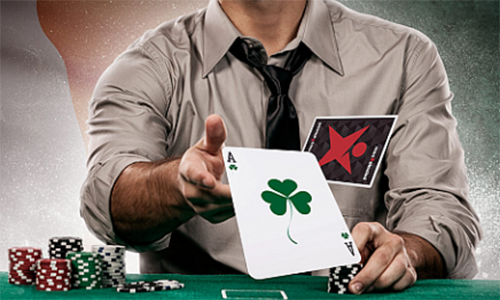MPN to Experiment With Max Buy-in-Only Tables
The Microgaming Poker Network (MPN) is once again making changes to its poker platform in an attempt to make the games more enjoyable for more people. This time, the network is experimenting with restrictions on certain tables to eliminate the practice of “short stacking” in cash games.
Those who employ the short stacking strategy intentionally buy-in to a cash game for the table’s minimum buy-in, even though they can easily afford to buy-in for the max. For some, this is can simply be because they are novices or nervous about entering a game which might be new to them, but for many others, short stacking is a serious strategy.
 A short stacker is prepared to be all-in or nothing on every hand, as a short stack does not allow for much in the way of raises without getting pot-committed quickly. This type of player does not mess around with speculative hands and plays mostly pre-flop. Those who buy-in for the max typically hate playing with short stackers for a number of reasons: 1) As soon as a short stacker gets into a hand, the player with the deep stack loses the opportunity to paid off on a big hand; 2) Short stackers can be annoyingly aggressive pre-flop (though they also aren’t typically too difficult to read); 3) They often can’t be outplayed post-flop because they don’t play post-flop.
A short stacker is prepared to be all-in or nothing on every hand, as a short stack does not allow for much in the way of raises without getting pot-committed quickly. This type of player does not mess around with speculative hands and plays mostly pre-flop. Those who buy-in for the max typically hate playing with short stackers for a number of reasons: 1) As soon as a short stacker gets into a hand, the player with the deep stack loses the opportunity to paid off on a big hand; 2) Short stackers can be annoyingly aggressive pre-flop (though they also aren’t typically too difficult to read); 3) They often can’t be outplayed post-flop because they don’t play post-flop.
The above may be an over-simplification, but you get the idea.
As such, Microgaming’s Head of Poker Alex Scott announced in a blog post last week that starting on December 1st, the network will change all of its Omaha Hi/Lo tables to only allow buy-ins of 100 big blinds. No more, no less. This is just an experiment right now, but if it goes well (or even has neutral results), MPN will roll out the change to the rest of the network’s tables.
Interestingly, though, the change isn’t being made just to satisfy those who can’t stand short stackers. Alex Scott calls back to an article Kim Lund wrote in 2013 in which he said, “I’d argue that those in the know either min buy-in to try and hit-and-ruin the game or they buy-in max to make sure they’re not at a disadvantage. All other possible choices are moot.”
Scott wanted to see if this was true, but at the time didn’t have a sufficient amount of data to figure it out. Now that he does, he and his team at MPN combed through it all to see what they could find.
They went through nearly 2.3 million buy-ins from earlier this year, to be exact, filtering out some that would skew the results, such as at stakes that permit for buy-ins lower than 30 big blinds (the typical minimum buy-in). Initially, one pattern began to develop:
At this early stage, we discovered that the players who perform the worst are those who have no discernible strategy when buying in. For example, if you take between 80 and 89.99BB to the table, chances are that it’s the last bit of money in your account. You’re probably on tilt and playing badly, and hence players who buy-in for this amount lose the most money per buy-in of any group.
One could also argue that someone who buys-in for some odd amount that falls between the min and max buy-in often doesn’t really have much of an idea of what they are doing.
Scott didn’t want people who were not playing seriously to mess up the results, either, so “we focused only on players who had made 10 or more buy-ins, and who tended to buy in for the same amount, i.e. players whose buy-in was in the same category 60% or more of the time. About 57% of players who buy-in more than 10 times have a clear preference like this.”
The MPN team found that 85 percent of cash game buy-ins are for 100 big blinds on the nose, while just 8 percent are for the minimum 30 big blinds. 40 big blinds and 50 big blinds are next at 3 percent and 2 percent, respectively. 97.5 percent of players have bought in for 100 big blinds at some point.
Nearly half – 47 percent – of those who buy-in for 100 big blinds are net winners, compared to 43 percent of 30 big blinds players. Scott comments on what looks like a slight difference:
That might seem close, but it isn’t because the amounts won and lost are significantly different. 100BB players make up 82% of players, but win 92% of the money. 30BB players make up 11% of players, but win just 4% of the money. A 30BB player loses over 6 times as much in their lifetime as a 100BB player, and 14 times as much per hand played (100BB players play more hands). This is despite the fact that they are much tighter, putting 56% less into the pot than 100BB players.
What convinced Scott that buying-in for 100 big blinds is better than buying-in for 30 is what happened when the “Grouped Lobby” feature was introduced on the network. Because the Grouped Lobby has a “Play” button that automatically seats a player with 100 big blinds, many players who normally bought in for 30 ended up buying-in for the max. Some players also, for whatever reason, switched from 100 to 30 big blinds.
As it turned out, those who went from 30 to 100 showed improved results and those who went from 100 to 30 – you guessed it – got worse. Thus, Scott believes that the buy-in plays at least some role in the success of a player. Hence, the added desire to try the new 100-big-blind table experiment.

















COMMENTS